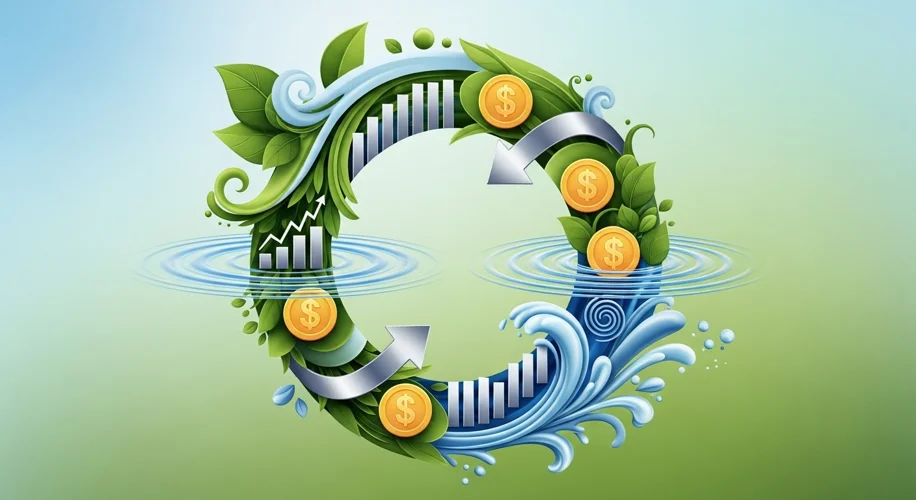I’ve spent a good portion of my career in the tech world, watching how innovation can fundamentally alter how we live and work. Lately, I’ve been thinking a lot about systems – how they’re built, how they function, and how they might evolve. One concept that’s really captured my attention is the circular economy, and I’m starting to see how its principles could be surprisingly relevant to our financial systems.
For those who might not be familiar, the traditional, or linear, economy often follows a ‘take-make-dispose’ model. We extract resources, create products, use them, and then throw them away. It’s a system that, frankly, has contributed to a lot of waste and resource depletion.
The circular economy, on the other hand, is about closing those loops. It’s inspired by nature, where nothing is wasted. Think about it: a forest doesn’t have a landfill. Fallen leaves become nutrients for new growth. The idea is to design out waste and pollution, keep products and materials in use, and regenerate natural systems.
So, how does this relate to finance? Well, if you look at how money flows, it often feels quite linear too. Capital is invested, profits are generated, and often that capital is then extracted or spent, sometimes leading to imbalances. We see this in the way investment funds might focus on short-term gains, or how certain financial products can sometimes lead to value being extracted from communities or the environment without a clear path for reinvestment or regeneration.
Applying circular principles means rethinking these flows. Imagine financial systems that are designed to:
- Keep Capital in Use: Instead of money being spent and disappearing, could it be structured to be reinvested or regenerated within a system? Think about long-term investment models that prioritize sustainable growth and community benefit, ensuring that capital continues to circulate and create value rather than being a one-time injection.
- Design Out Financial Waste: Just as the circular economy aims to eliminate physical waste, circular finance could aim to reduce inefficiencies and speculative activities that don’t contribute to genuine economic or social well-being. This might involve promoting more transparent and ethical investment practices.
- Regenerate Value: This is perhaps the most exciting part. Can financial systems actively contribute to regenerating natural or social capital? This could mean investing in projects that have a positive environmental impact, support community development, or foster innovation that benefits society as a whole. The returns wouldn’t just be financial; they’d also be measured in improved environmental and social outcomes.
We’re already seeing glimmers of this. Impact investing, for instance, is about using capital to generate positive social and environmental impact alongside a financial return. Green bonds and social bonds are also examples of financial instruments designed to fund specific sustainable projects. These are steps, albeit often small ones, towards a more circular financial landscape.
As technology continues to evolve, it offers new tools to track, manage, and facilitate these circular financial flows. Blockchain, for example, could offer greater transparency in how capital is used and its impact. Data analytics can help us understand the long-term effects of financial decisions.
It’s not about abandoning traditional finance, but rather about augmenting it, about building financial systems that are more resilient, more equitable, and more aligned with the long-term health of both our economy and our planet. It’s a complex challenge, but one that I believe is essential for building a truly sustainable future. What are your thoughts on how finance can become more circular?

